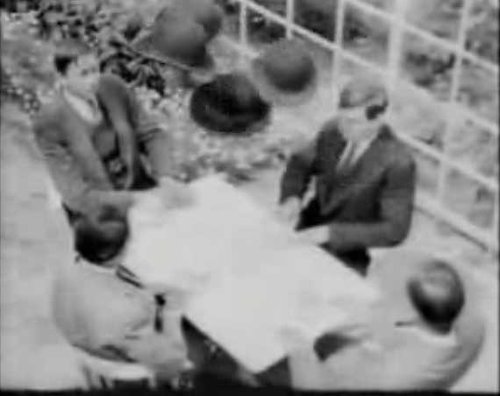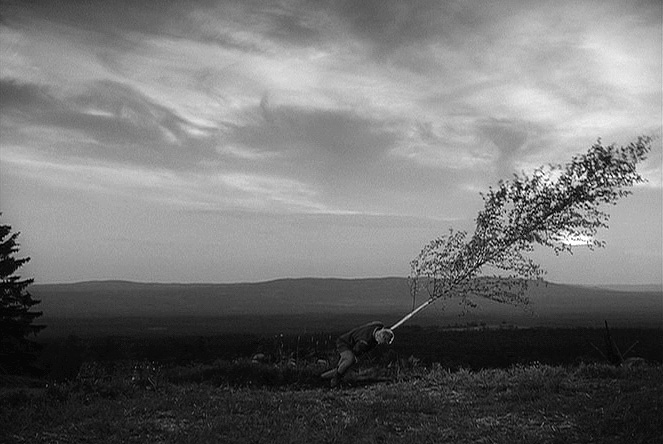This presents an interesting problem. Caricature has never been taken as seriously as realism. The history of Western art, with the exception of the dark ages and the 20th century, has always been derived from realism, and the art of the dark ages probably had more to do with the loss of knowledge and craft than with a conscious artistic choice. Caricature might be seen as clever, but except for artists, nobody values caricature as more than a lightweight diversion. Disney moved more towards illustration when he went into features. The all-cgi features have pushed their visuals towards greater complexity (which sometimes clashes with their character designs). Video games have also gravitated towards realism. I believe that this has been motivated by a desire to be taken more seriously by getting closer to what Western eyes value in art. From Mark Mayerson’s thoughtful post on Avatar’s use of mocap versus keyframe animation, why James Cameron and Peter Jackson can do it successfully (and artfully) but Robert Zemeckis fails at it (the zombie-eyed children of Polar Express, A Christmas Carol), and whether the rift between traditional animation and performance capture speaks to something deeper in the history of representational art.
Tag: film
-
This Presents an Interesting Problem Caricature
-
Salon: The Aesthetic Gulf Between Miyazaki and Pixar
In place of the conventional, reductive versions of morality and psychology shown in Pixar’s films, Miyazaki gives us something closer to actual experience, treating good and evil not as a binary equation but as a sliding scale and presenting people (and characters) that often don’t know why they do what they do and latch on to reductive explanations at their peril. Characters can be scary and then friendly, threatening and then reassuring, honest and then misleading; they can shift identities and change shape, succumb to spells and then break out of them. […]
Parents will testify that a child who sees his or her first Miyazaki film after a steady diet of Pixar and Disney is apt to experience a perhaps troubled reaction, much deeper than “That was fun” or “I liked it.” Miyazaki challenges every preconceived notion about family entertainment that Pixar and its ilk conditions children (and adults) to have. Pixar’s very best work this decade — “The Incredibles,” “Wall-E” and “Up,” and moments of “Monsters, Inc.” and “Finding Nemo” — is wonderful; it gives children lots to see and a fair amount to feel. But Miyazaki’s work does more than that. His art is engrossing and beautiful but also challenging. He urges children to understand themselves and the world, and then shows them how. The Babysitter mesmerizes children. Grandfather changes their lives.
From Salon’s “Directors of the Decade” countdown (Pixar and Miyazaki share the #2 slot). I think it’s a bit reductive to count “Pixar” as a director (why not specifically highlight Brad Bird or Andrew Stanton’s work?), but I know what they’re getting at. Pixar represents the best storytelling in American animation and both approaches have their valid points, but it’s interesting how much stronger of a moral stamp Miyazaki has on Studio Ghibli’s output.
(Via Mayerson on Animation)
-
Like the Hero of Willy Wonka and the Chocolate
Like the hero of “Willy Wonka and the Chocolate Factory,” also based on one of his books, the creatures of Dahl’s valley seem to know more than they’re letting on; perhaps even secrets we don’t much want to know. Children, especially, will find things they don’t understand, and things that scare them. Excellent. A good story for children should suggest a hidden dimension, and that dimension of course is the lifetime still ahead of them. Six is a little early for a movie to suggest to kids that the case is closed. Oh, what if the kids start crying about words they don’t know? – Mommy, Mommy! What’s creme brulee?“ Show them, for goodness sake. They’ll thank you for it. Take my word on this.
– From Roger Ebert’s review of Fantastic Mr. Fox
(Via the Ghibli Blog)
-
Hito Steyerl: In Defense of the Poor Image

The poor image is a copy in motion. Its quality is bad, its resolution substandard. As it accelerates, it deteriorates. It is a ghost of an image, a preview, a thumbnail, an errant idea, an itinerant image distributed for free, squeezed through slow digital connections, compressed, reproduced, ripped, remixed, as well as copied and pasted into other channels of distribution.
[…]
At present, there are at least twenty torrents of Chris Marker’s film essays available online. If you want a retrospective, you can have it. But the economy of poor images is about more than just downloads: you can keep the files, watch them again, even reedit or improve them if you think it necessary. And the results circulate. Blurred AVI files of half-forgotten masterpieces are exchanged on semi-secret P2P platforms. Clandestine cell-phone videos smuggled out of museums are broadcast on YouTube. DVDs of artists’ viewing copies are bartered.3 Many works of avant-garde, essayistic, and non-commercial cinema have been resurrected as poor images. Whether they like it or not.
– Excerpted from Hito Steyerl’s piece in e-flux journal #10
(Via Rhizome)
-
In a spin: the mysterious dancing epidemic of 1518.
“In 1518, one of the strangest epidemics in recorded history struck the city of Strasbourg. Hundreds of people were seized by an irresistible urge to dance, hop and leap into the air. In houses, halls and public spaces, as fear paralyzed the city and the members of the elite despaired, the dancing continued with mindless intensity. Seldom pausing to eat, drink or rest, many of them danced for days or even weeks. And before long, the chronicles agree, dozens were dying from exhaustion. What was it that could have impelled as many as 400 people to dance, in some cases to death?”
See also: choreomania, the Tanganyika laughter epidemic of 1962 (the wonderful Radiolab did a segment last year about this), la danse macabre, and St. Vitus’ Dance, not to mention the final scenes of Bergman’s The Seventh Seal and Fellini’s 8½.
(Via NCBI ROFL)
-
The Virgin Spring: Like Leaves in a Storm

“You see how the smoke trembles up in the roof holes? As if whimpering and afraid? Yet it’s only going out into the open air, where it has the whole sky to tumble about in. But it doesn’t know that. So it cowers and trembles under the sooty ridge of the roof. People are the same way. They worry and tremble like leaves in a storm because of what they know, and what they don’t know.” — from Ingmar Bergman’s The Virgin Spring
-
The Timing of Blinks

Update 11/3/2009: RadioLab did a short piece in October on this phenomenon, even discussing the Mr. Bean test with the Japanese researchers: http://blogs.wnyc.org/radiolab/2009/10/05/blink/
———-
From recent research out of Japan: “The results suggest that humans share a mechanism for controlling the timing of blinks that searches for an implicit timing that is appropriate to minimize the chance of losing critical information while viewing a stream of visual events.” In simpler words, the researchers found that audiences watching movies with action sequences have a strong tendency to synchronize their blinking so that they don’t miss anything good.
I’m not sure that this is interesting in and of itself, but it’s, um, eye-opening to think that we have our eyes closed for nearly 10% of our waking life. That’s roughly 10 full minutes of every movie lost to blinking. I imagine that editors already take this phenomenon into account, at least to some extent?
Full text available available in the Proceedings of the Royal Society B – Biological Sciences. Thanks, Creative Commons!
(Via NewScientist)
-
From pathos to bathos
The Three Stooges attempted pathos in Cash and Carry (1937). The Stooges arrive at their home, a dilapidated shack in the city dump, only to find a little boy they don’t know doing his homework at the kitchen table. The Stooges do not react with great sentiment to this child. Larry pipes up, “Come on, beat it.” But, then, they realize that the boy is wearing a leg brace and needs the support of a crutch to stand and walk. The boy tells the Stooges that his mom and dad are gone and he’s being raised by his big sister. Moe, normally gruff and scowling, smiles sympathetically and softens his voice. He has never acted more tenderly to another individual. But the other two Stooges do not show much concern. […] Seconds after meeting the crippled orphan boy, Curly accidentally hits Moe in the head with a pipe and it’s back to their usual comedy business. A pathos comedy was, in the end, no more significant to the Stooges than a haunted house comedy.
From Why You Want to Bring Me Down?, a great comparison of the use (and perhaps more often, misuse) of pathos in comedies, from Charlie Chaplin and Harold Lloyd to Adam Sandler and Robin Williams.
-
Johan Grimonprez’s Double Take
A short clip from Double Take, a film by media artist Johan Grimonprez (there are a handful of other clips on YouTube). “They say that if you meet your double, you should kill him.” Hitchcock versus Hitchcock versus the Cold War, with cinematic history folding in on itself. There’s a worthwhile interview with Grimonprez over on the Cinema Scope website with more info.
-
Cinéorama
The original IMAX experience, circa 1900.
